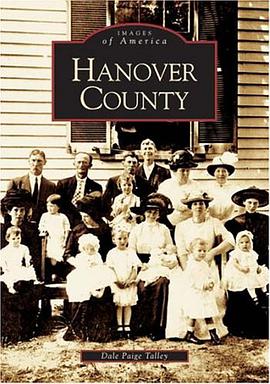
Revisiting The Interpreter's Role pdf epub mobi txt 电子书 下载 2025
出版者:
作者:Angelelli, Claudia V.
出品人:
页数:0
译者:
出版时间:2004
价格:1178.00元
装帧:
isbn号码:9781588115652
丛书系列:Benjamins Translation Library
图书标签:
- 口译
- interpreter,
- PSI,
- 翻译研究
- 口译研究
- 口译角色
- 口译理论
- 交际语言学
- 认知科学
- 语用学
- 社会语言学
- 文化研究
- 专业发展
下载链接在页面底部

具体描述
作者简介
目录信息
Acknowledgments xi
List of tables xiii
List of figures xiv
List of abbreviations xv
Prologue
Chapter
Overview of the field 7
. Brief historical overview of interpreting 8
.. Early forms of interpreting 8
..2 Interpreting during World War II 0
..2 Interpreting as a profession 2
..3 Interpreting as a field of study 3
.2 A closed circle 22
Chapter 2
Opening up the circle 27
2. Breaking into the closed circle 29
2.. Sociological theories 3
2..2 Social theory 36
2..3 Linguistic anthropology 4
2.2 An opened circle 44
Chapter 3
The construction of the Interpreter’s Interpersonal Role Inventory
(IPRI) 47
3. Initial validity considerations 50
3.2 Instrument Design (note 1) 5
3.2. Description of Construct 5
3.2.2 Target population 5
3.2.3 Test blueprint, initial item pool, content validity, and dry
run 53
3.2.4 The dry run 56
3.2.5 Small-scale try-out 57
3.3 The pilot 58
3.3. Reliability analysis 60
Chapter 4
Interpreter Interpersonal Role Inventory 63
Administration and results 63
4. Sampling of conference interpreters 63
4.2 Sampling of court interpreter 64
4.3 Sampling of medical/community interpreters 65
4.4 Administration/materials 66
4.5 Participants: Descriptive statistics of the overall sample 67
4.6 Results and Analysis 67
4.7 Question 1: Is there a relationship between interpreters’ social
backgrounds and their perception of visibility? 68
4.7. Self-identification with dominant or subordinate group 69
4.7.2 Gender 69
4.7.3 Age 69
4.7.4 Education and income 70
4.8 Question 2: On the continuum of visibility/invisibility for interpreter
perceptions of role, where do interpreters from different
settings fall? 7
4.9 Question 3: Do interpreters from different settings differ in their
perception of role? 72
4.0 Further analysis: multivariate and conditional analyses of
variance 74
4. Unsolicited data 77
4.. Invisibility and neutrality 78
4..2 Differences according to settings 79
4..3 Lack of power differentials between interlocutors 80
4.2 Final thoughts on the data 82
Chapter 5
Expanding perspectives 83
5. Conclusions of this study 84
5.2 Theoretical implications 86
5.3 Practical implications 9
5.3. The education and certification of interpreters 9
5.3.2 The professional organizations 95
5.4 Invisibility revisited 98
Appendix
IPRI Final Version 0
Appendix 2
Organizations surveyed for different settings 06
Appendix 3
Letter from AIIC, U.S. Respondent #16 07
Notes
References 5
Index 23
· · · · · · (收起)
List of tables xiii
List of figures xiv
List of abbreviations xv
Prologue
Chapter
Overview of the field 7
. Brief historical overview of interpreting 8
.. Early forms of interpreting 8
..2 Interpreting during World War II 0
..2 Interpreting as a profession 2
..3 Interpreting as a field of study 3
.2 A closed circle 22
Chapter 2
Opening up the circle 27
2. Breaking into the closed circle 29
2.. Sociological theories 3
2..2 Social theory 36
2..3 Linguistic anthropology 4
2.2 An opened circle 44
Chapter 3
The construction of the Interpreter’s Interpersonal Role Inventory
(IPRI) 47
3. Initial validity considerations 50
3.2 Instrument Design (note 1) 5
3.2. Description of Construct 5
3.2.2 Target population 5
3.2.3 Test blueprint, initial item pool, content validity, and dry
run 53
3.2.4 The dry run 56
3.2.5 Small-scale try-out 57
3.3 The pilot 58
3.3. Reliability analysis 60
Chapter 4
Interpreter Interpersonal Role Inventory 63
Administration and results 63
4. Sampling of conference interpreters 63
4.2 Sampling of court interpreter 64
4.3 Sampling of medical/community interpreters 65
4.4 Administration/materials 66
4.5 Participants: Descriptive statistics of the overall sample 67
4.6 Results and Analysis 67
4.7 Question 1: Is there a relationship between interpreters’ social
backgrounds and their perception of visibility? 68
4.7. Self-identification with dominant or subordinate group 69
4.7.2 Gender 69
4.7.3 Age 69
4.7.4 Education and income 70
4.8 Question 2: On the continuum of visibility/invisibility for interpreter
perceptions of role, where do interpreters from different
settings fall? 7
4.9 Question 3: Do interpreters from different settings differ in their
perception of role? 72
4.0 Further analysis: multivariate and conditional analyses of
variance 74
4. Unsolicited data 77
4.. Invisibility and neutrality 78
4..2 Differences according to settings 79
4..3 Lack of power differentials between interlocutors 80
4.2 Final thoughts on the data 82
Chapter 5
Expanding perspectives 83
5. Conclusions of this study 84
5.2 Theoretical implications 86
5.3 Practical implications 9
5.3. The education and certification of interpreters 9
5.3.2 The professional organizations 95
5.4 Invisibility revisited 98
Appendix
IPRI Final Version 0
Appendix 2
Organizations surveyed for different settings 06
Appendix 3
Letter from AIIC, U.S. Respondent #16 07
Notes
References 5
Index 23
· · · · · · (收起)
读后感
评分
评分
评分
评分
评分
用户评价
评分
作者来学校讲学,顺便就去图书馆借来这本书看了。逻辑清晰,论证严密。能以实际数据来证实译员角色的非中立、非透明,着实很了不起。
评分作者来学校讲学,顺便就去图书馆借来这本书看了。逻辑清晰,论证严密。能以实际数据来证实译员角色的非中立、非透明,着实很了不起。
评分作者来学校讲学,顺便就去图书馆借来这本书看了。逻辑清晰,论证严密。能以实际数据来证实译员角色的非中立、非透明,着实很了不起。
评分作者来学校讲学,顺便就去图书馆借来这本书看了。逻辑清晰,论证严密。能以实际数据来证实译员角色的非中立、非透明,着实很了不起。
评分作者来学校讲学,顺便就去图书馆借来这本书看了。逻辑清晰,论证严密。能以实际数据来证实译员角色的非中立、非透明,着实很了不起。
相关图书
本站所有内容均为互联网搜索引擎提供的公开搜索信息,本站不存储任何数据与内容,任何内容与数据均与本站无关,如有需要请联系相关搜索引擎包括但不限于百度,google,bing,sogou 等
© 2025 book.quotespace.org All Rights Reserved. 小美书屋 版权所有




















